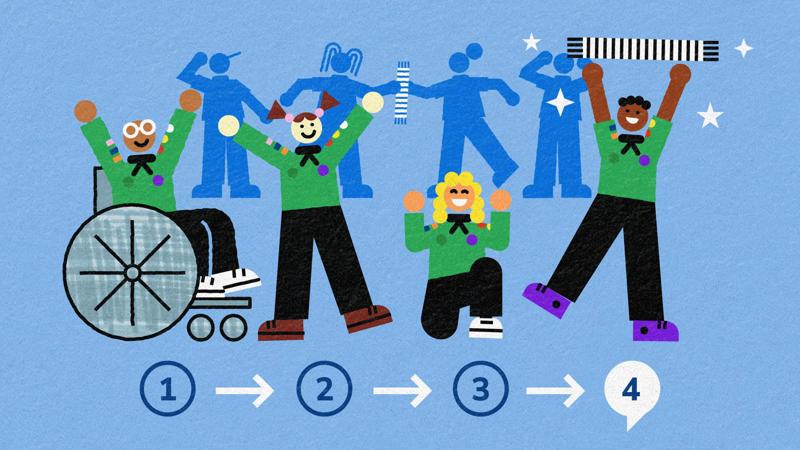
Scarves and ladders
- Everyone should split into two teams. Both teams should be the same size, and the teams shouldn’t be bigger than 10 people.
- Each team should sit in a line. The players in each team should be next to each other, facing the other team’s line.
- The person leading the game should give each player a number. Each player should face one player from the other team, and they should both have the same number. For example, the first player in each team’s line is player one, the second player two, and so on.
- The person leading the game should give the first person in each team a scarf (or any other unbreakable object) to hold.
- The person leading the game should call out a number.
- Each team should pass the scarf to the player with that number, as quickly as possible. No one can throw the scarf, and no one can be skipped as the scarf moves along the line.
- The first team to get the scarf to the correct player (and stop it there!) wins a point.
- The person leading the game should keep calling numbers at random until everyone’s had a turn. They could change the level of challenge, too.
Reflection
This game tested the reflexes of the whole team. Everyone had to be ready to pass on the scarf to get it to its destination safely. How did the teams communicate to figure out where the scarf had to go? They could’ve counted their numbers out loud to track its progress, or they could’ve figured out who the scarf had to go to first and called out their name instead.
Working together was important in this game. It was easy to get excited, but snatching the scarf or pushing it into a teammate’s hand usually makes it harder for everyone to pass the scarf all the way to its destination. Well done to everyone for working together!
Safety
All activities must be safely managed. You must complete a thorough risk assessment and take appropriate steps to reduce risk. Use the safety checklist to help you plan and risk assess your activity. Always get approval for the activity, and have suitable supervision and an InTouch process.
It’s up to you how fast you call out the numbers. You could call out more than one number in a turn, for example ‘three, then five’, so each team has to get the scarf to player three, and then to player five.
You could add actions, for example, ‘number six should wave it in the air’ – teams will have to listen carefully to remember the number and the action. Give another person in each team a scarf, and then call out two numbers – both scarves should travel in opposite directions to swap between the two numbers called.
Call out a simple sum (such as ’three plus four’) – each team will have to work out the answer quickly and pass the scarf to that number without giving the answer away to the other team. You could also ask questions with number answers, for example, ‘how many legs does a cat have?’.
Make sure that the object you use is easy to hold and hard to break, something like a scarf is perfect!
All Scout activities should be inclusive and accessible.
You don’t have to stick to numbers, or even English. You could give people words that make a story, or use the game to learn numbers or words in a different language.

